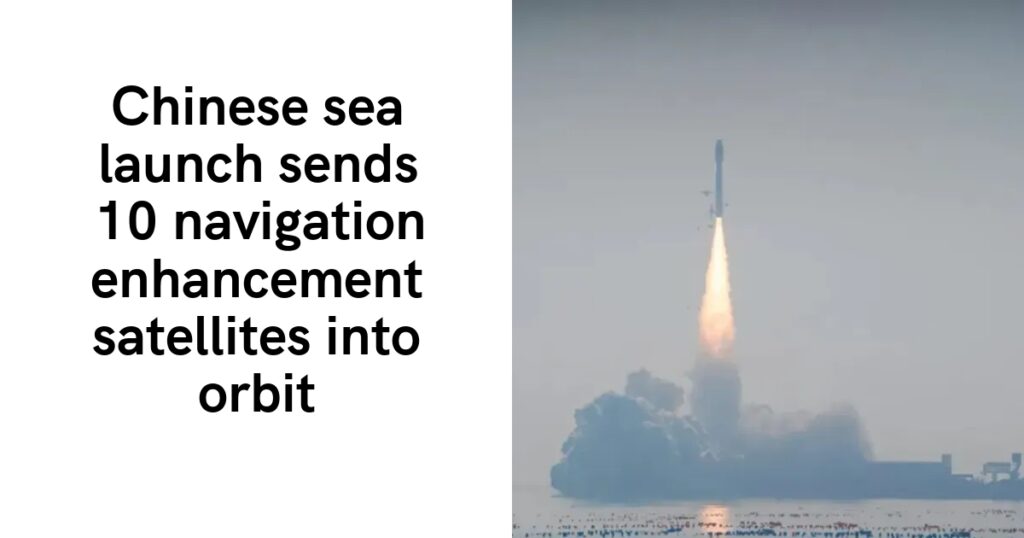HELSINKI — China launched a Jielong-3 solid rocket from a mobile sea platform late Sunday, successfully placing 10 Centispace navigation enhancement satellites into orbit.
The fifth Jielong-3 (Smart Dragon-3) solid propellant rocket lifted off at 10:00 p.m. Eastern, Jan. 12 (0300 UTC, Jan. 13) from a specially converted sea barge off the coast of Haiyang city, in the Eastern province of Shandong. The China Aerospace Science and Technology Corporation (CASC) announced launch success more than two hours after liftoff.
The flight carried 10 Microcentispace-01 (Weili Kongjian group 01) navigation enhancement satellites for commercial company Future Navigation, full name Beijing Future Navigation Technology Co., Ltd. The low Earth orbit (LEO) satellites are designed to augment GNSS signals from systems including Beidou and GPS to provide higher precision navigation services.
The Centispace system is designed to feature 190 satellites in LEO at various altitudes and inclinations, along with a ground segment consisting of monitoring stations. Stated applications include autonomous driving, precision agriculture, Geographic Information Systems (GIS) and assisting in emergency response and disaster management.
The Jielong-3 rocket was developed by the China Academy of Launch Vehicle Technology (CALT), a subsidiary of CASC, the country’s state-owned main space contractor. The four-stage rocket is operated by China Rocket, a commercial spinoff from CASC.
It has a length of approximately 31 meters, a weight of 140 tons at liftoff. Its payload capacity of 1,560 kg to a 500 km Sun-synchronous orbit was increased to 1,600 kg for this flight.
“In the future, the Smart Dragon-3 rocket will undergo further improvements and upgrades to reduce the cost for the commercial launches and increase its carrying capacity,” Gao Lijun from CASC told China Central Television (CCTV). “We estimate that after the improvements, its carrying capacity will rise from 1.5 tons to about 2 tons,” Gao said.
The launch was carried out using facilities belonging to the Haiyang Eastern spaceport for sea launches. The spaceport plans more than 10 for 2025, having conducted six sea launches in 2024. Officials said in a recent Chinese media report that the spaceport aims to support 100 launches per year starting from 2027. China launched 68 times in total last year, setting a new national record.
The launch was China’s second orbital launch attempt of 2025 and the second success. The mission follows a Long March 3B launch which sent a satellite servicing spacecraft towards geostationary orbit Jan. 6.
CASC has yet to publish an overview of China’s overall plans for the year, but it may once again attempt to reach around 100 launches, as targeted for 2024. Major missions for 2025 include crewed Shenzhou and Tianzhou cargo missions to the Tiangong space station and the Tianwen-2 near-Earth asteroid sample return mission. The latter is expected to launch around May.


